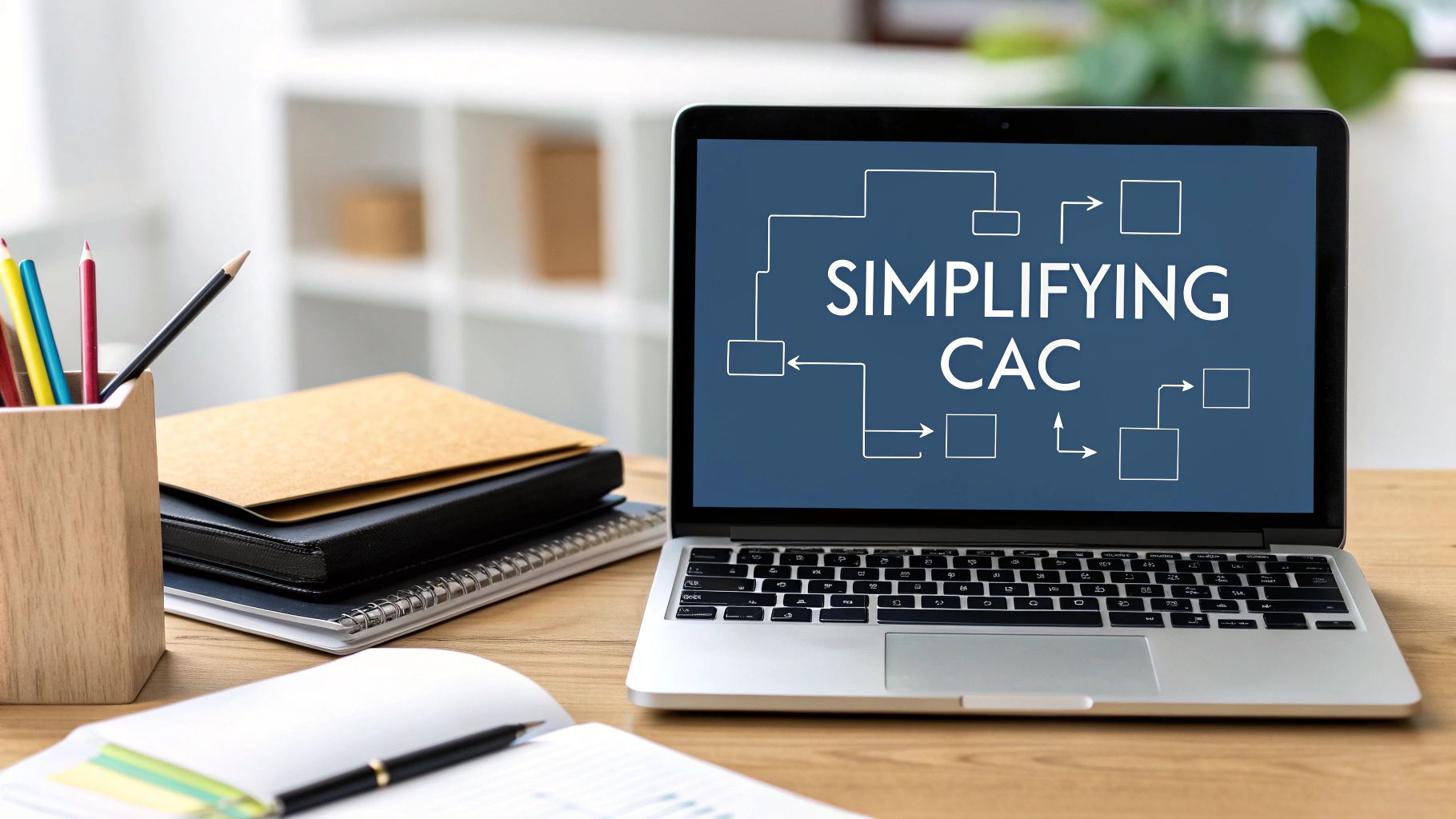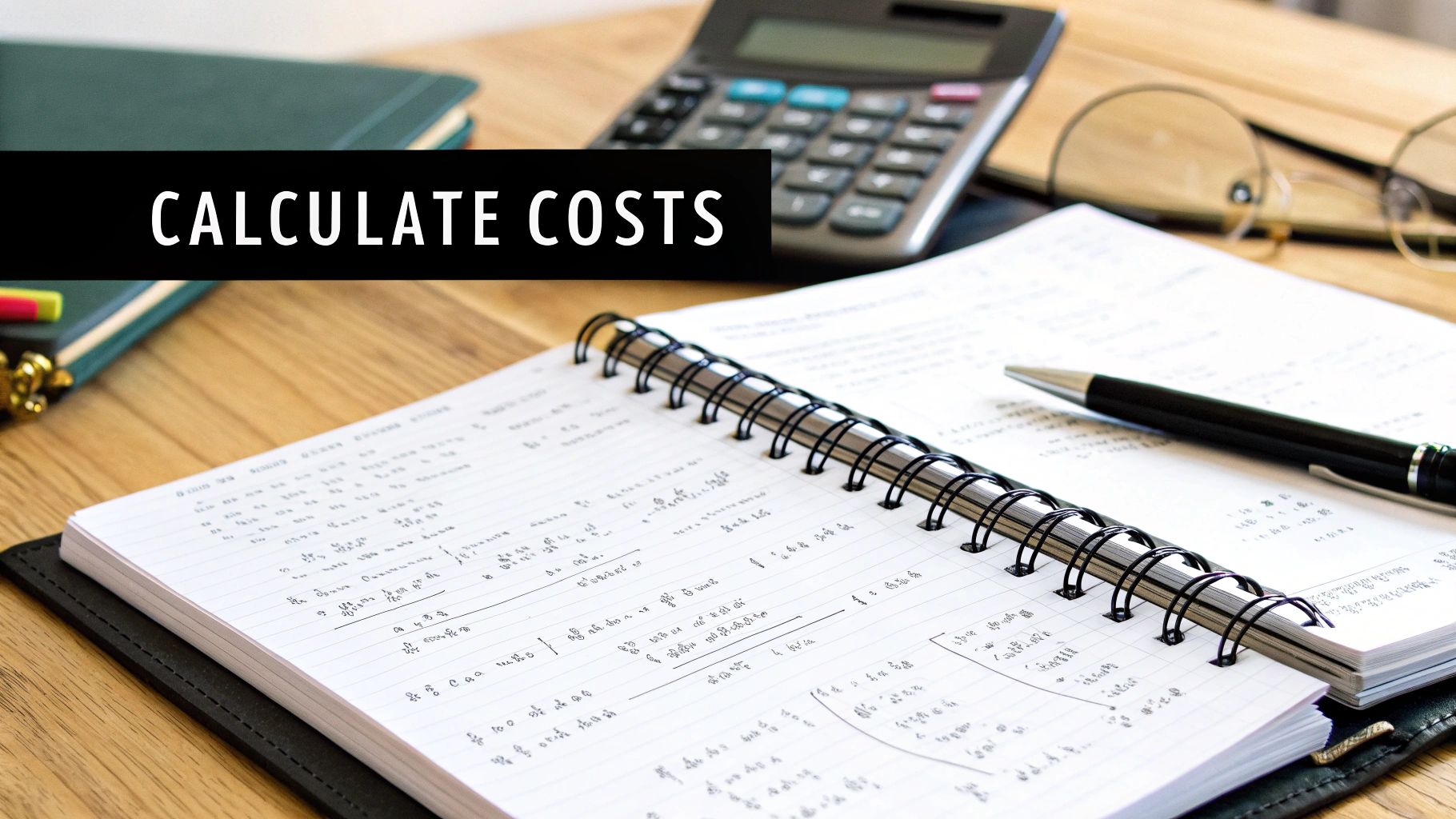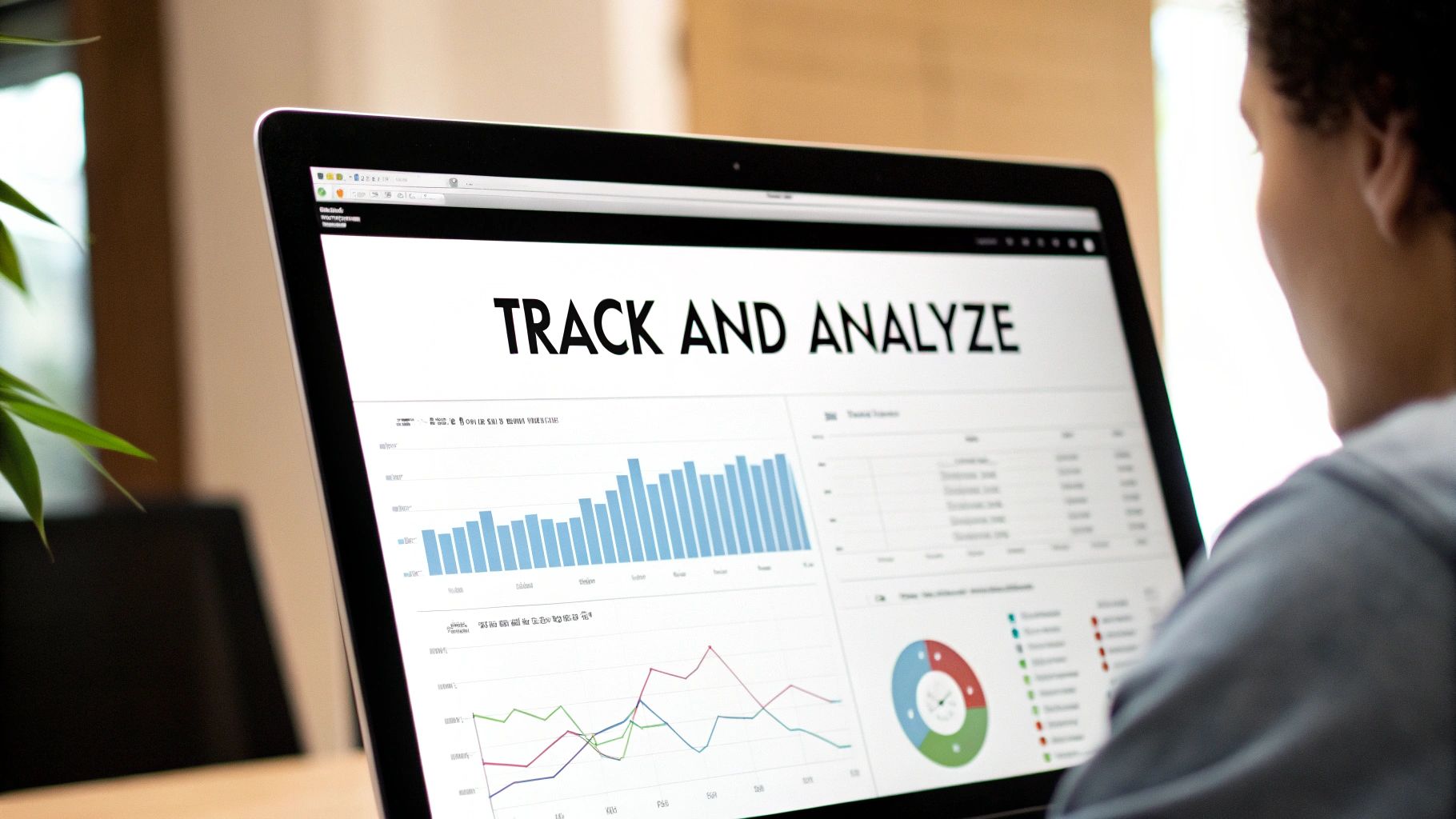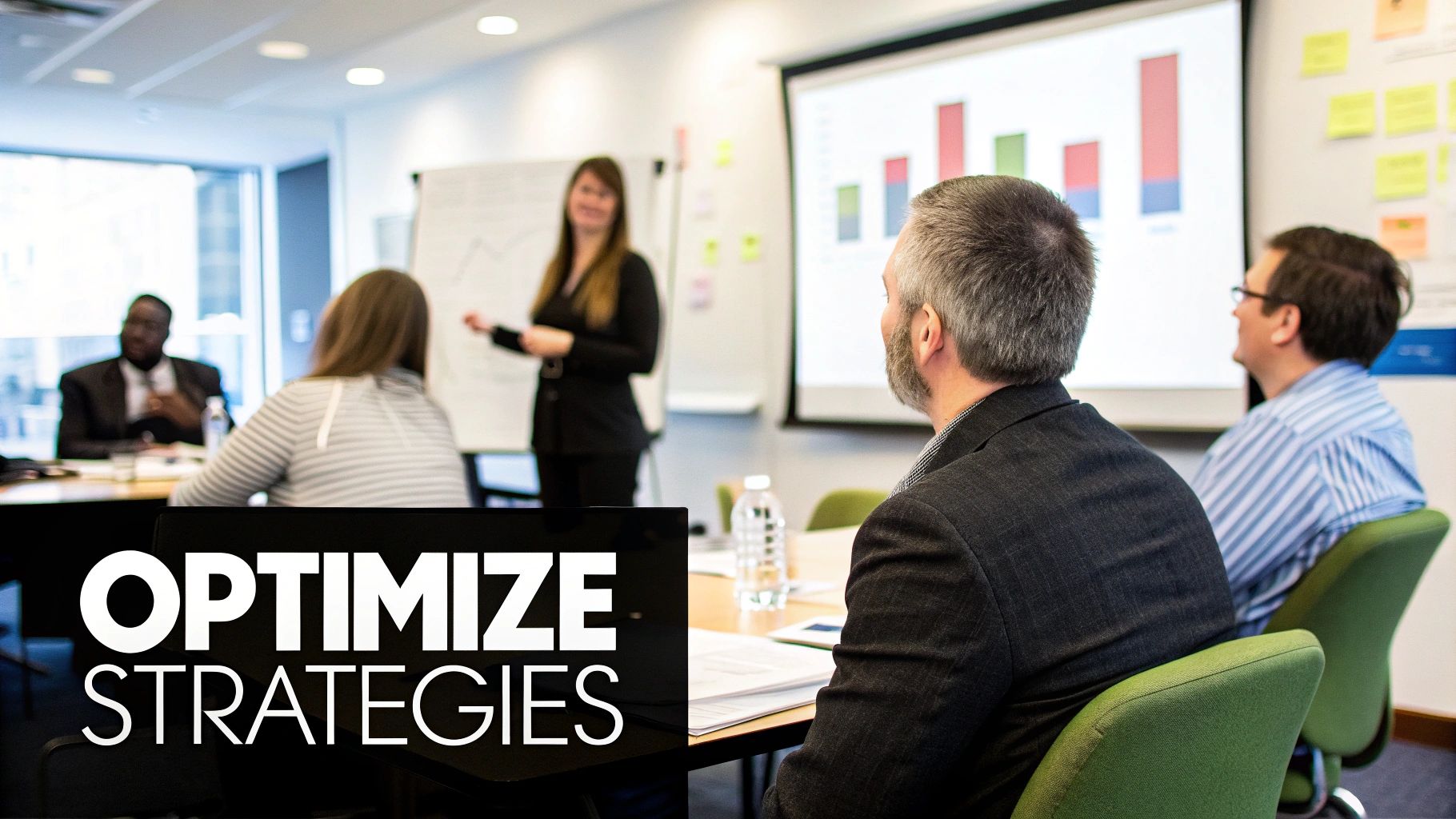Why Your CAC Numbers Matter More Than You Think
Understanding Customer Acquisition Cost (CAC) is like monitoring your business's vital signs – it reveals the true health of your growth and marketing efforts. Just as ignoring your car's fuel gauge can leave you stranded, overlooking CAC can put your entire business at risk. Let's explore why this metric deserves your full attention and how to use it effectively.
Unveiling the True Cost of Acquisition
Most businesses make the mistake of only counting direct marketing expenses when calculating CAC. The reality is much more complex. To get an accurate picture, you need to factor in sales team salaries, software costs, content creation, and customer onboarding expenses. For instance, a SaaS company might think their CAC is reasonable based on ad spend alone, but once they add in their sales team costs and extensive onboarding process, the true number can be eye-opening. This complete view helps make smarter decisions about where to invest resources.
Tailoring CAC to Your Business Model
Your business model should guide how you think about CAC. Take subscription businesses – they can afford to spend more upfront on customer acquisition since they'll earn recurring revenue over time. Compare this to single-purchase businesses that need to recover their costs much faster. Enterprise software companies naturally have higher CAC due to lengthy sales cycles, while e-commerce stores selling everyday items need to keep acquisition costs low. The key is understanding these differences when setting goals and evaluating performance.
Beyond Industry Benchmarks: What Your CAC Really Means
While industry benchmarks provide helpful context, they shouldn't dictate your strategy. Using a CAC calculator helps you understand your specific situation and make adjustments based on your unique circumstances. A higher CAC isn't automatically bad if your customer lifetime value (CLV) is strong. Consider luxury brands – they often spend more to acquire customers but make it up through high-margin sales. Focus on optimizing your own numbers rather than chasing industry averages that might not apply to your situation.
Leveraging CAC for Strategic Decision-Making
Smart companies use CAC as a powerful strategic tool, not just another metric on a dashboard. By analyzing CAC alongside other key performance indicators, you can identify your most effective marketing channels, improve your sales process, and adjust pricing strategies. Regular CAC tracking also helps measure campaign performance and guides smart adjustments to your marketing mix. This ongoing optimization builds a sustainable growth engine that brings in new customers efficiently and profitably. Success comes from treating CAC as a guide for continuous improvement rather than just a number to report.
Building Your CAC Calculator: A No-Nonsense Approach

Understanding exactly what it costs to acquire new customers is essential for any business. Let's walk through how to build a straightforward customer acquisition cost (CAC) calculator that gives you clear, actionable insights. This practical approach focuses on tracking real expenses that impact customer acquisition, helping you make smart decisions about where to invest your resources.
Identifying Your Key Acquisition Expenses
Start by listing out all the costs directly related to bringing in new customers. For example, a company might spend $10,000 on marketing to gain 50 customers. While this suggests a simple CAC of $200 per customer, the real picture includes many other elements. Sales team salaries, commission structures, and software costs like CRM systems all contribute to your true acquisition costs. Even content creation, customer onboarding materials, and early support interactions need to be factored in for an accurate calculation.
Factoring in Sales Cycles and Attribution
Different businesses have unique sales cycles that affect their CAC calculations. Companies selling enterprise software typically see higher CACs than e-commerce stores because they need more time and touchpoints to close deals. For instance, if your sales cycle spans three months, you'll need to include all marketing and sales costs across that period to get an accurate picture.
Understanding which marketing channels bring in customers adds another layer to CAC calculations. When you're using multiple channels like social media, email marketing, and paid advertising, it's important to know which ones drive results. A basic CAC calculator might credit the last touchpoint before conversion, but more detailed analysis can show how different channels work together throughout the customer journey.
Building Your Calculator: A Step-by-Step Guide
Here's how to create a practical CAC calculator that works for your business:
- Step 1: Define the Time Period: Pick a specific timeframe – monthly, quarterly, or yearly – to ensure consistent measurements and meaningful comparisons.
- Step 2: Categorize Your Expenses: List all costs related to acquiring customers, from marketing programs and salaries to software subscriptions and content creation.
- Step 3: Calculate Total Costs: Add up all expenses within each category for your chosen period.
- Step 4: Determine Number of New Customers: Count only new customers acquired during this period, not returning ones.
- Step 5: Calculate Your CAC: Divide total costs by new customer count. For example, $12,000 in expenses divided by 60 new customers equals a $200 CAC.
- Step 6: Refine and Iterate: Your first version is just the beginning. Keep improving by adding detailed cost tracking, testing different attribution approaches, and breaking down customer segments.
By carefully monitoring these expenses and fine-tuning your calculator over time, you'll gain clear insights into what it really costs to acquire customers. This knowledge helps you focus your marketing budget where it matters most and improve your return on investment.
Avoiding the Hidden Traps in CAC Tracking
Creating a solid customer acquisition cost calculator lays the foundation, but accurately tracking CAC requires keen awareness of several common pitfalls that can distort your metrics and lead you astray. Let's explore these potential traps and practical ways to avoid them, so you can maintain precise CAC calculations that drive smart decisions.
The Multi-Channel Attribution Maze
Picture this: A customer discovers your brand on social media, later clicks your paid ad, and finally converts after receiving an email. Which channel deserves credit for the sale? Many businesses default to a last-click model, giving all credit to that final email touchpoint. This oversimplified approach misses the vital roles that social media and paid advertising played in the customer's journey. By implementing multi-touch attribution, you'll gain deeper insights into how different channels work together to drive conversions. For instance, you might find that social media creates initial awareness that makes your paid ads more effective later in the funnel.
The Long Sales Cycle Dilemma
For companies with extended sales cycles, like those selling enterprise software, CAC tracking must account for costs across the entire journey – from first touch to final close. This process often spans months and involves significant investments in lead nurturing. Only looking at costs right before conversion paints an incomplete picture. To get accurate CAC figures, you need to factor in all marketing and sales expenses throughout the full cycle. Take a SaaS company with a typical six-month sales process – their CAC calculation should include everything from initial marketing campaigns to sales team costs across that entire period for customers who closed during that timeframe.
The Segmented Customer Conundrum
Not all customers cost the same to acquire. Consider the stark contrast between landing a major enterprise account versus an individual customer – the resources required can vary dramatically. Calculating one average CAC across all segments masks these important differences. Breaking down your CAC by customer segments – whether by acquisition channel, customer value, or buying patterns – reveals which groups deliver the best return on your marketing spend. This granular view helps you spot your most cost-efficient acquisition opportunities and adjust your strategy accordingly. Your CAC tracking system should be designed to handle these segment-specific calculations to give you the full picture.
Transforming Your CAC Strategy for Better Results

Understanding how to calculate Customer Acquisition Cost (CAC) is just the start – the real value comes from actively working to reduce it. Let's explore practical strategies that can help you optimize your customer acquisition efforts through smart use of data, automation, and customer insights.
Identifying Your Most Profitable Channels
Success in reducing CAC starts with knowing which marketing channels deliver the best results. By analyzing your customer acquisition data carefully, you can spot patterns that show which channels bring in customers most cost-effectively. For instance, you might find that organic search consistently delivers better ROI than paid social media. Armed with these insights, you can shift more resources toward what works best while scaling back spending on less effective channels. This focused approach helps ensure every marketing dollar drives maximum impact.
Optimizing Your Marketing Mix
Once you've identified your top-performing channels, it's time to fine-tune how they work together. The key is creating the right blend of content marketing, email outreach, social media, and paid advertising that complement each other. If your data shows content marketing excels at building initial awareness, you might invest more in creating high-quality blog posts and articles to capitalize on that strength. By thoughtfully adjusting your marketing mix based on real performance data, you can create a more efficient acquisition system.
Building Effective Referral Programs
Customer referrals are among the most cost-effective ways to acquire new business. When happy customers recommend your brand to others, they become powerful advocates who can bring in new customers at minimal cost. A well-designed referral program that rewards both the referrer and new customer creates positive momentum – each new customer potentially becomes another source of referrals. Over time, this can significantly reduce your reliance on more expensive acquisition methods while building a base of loyal customers.
Leveraging Data and Automation
Analytics tools provide deep insights into how customers interact with your business. By closely tracking behavior patterns, website engagement, and campaign performance, you can identify exactly where potential customers drop off and make targeted improvements. For example, you might discover specific landing pages or email sequences that need optimization. Marketing automation tools can help streamline these improvements by personalizing interactions, nurturing leads, and measuring results – freeing up your team to focus on strategic planning. This combination of careful analysis and smart automation creates an efficient system for bringing in new customers cost-effectively.
Making CAC and CLV Work Together

Want to grow your business sustainably? Then you need to understand how Customer Acquisition Cost (CAC) and Customer Lifetime Value (CLV) work together. When used effectively, a CAC calculator provides key insights that help you make smarter decisions about where to invest your marketing budget. Let's explore the relationship between these two metrics and see how they drive business success.
Why the CAC:CLV Ratio Matters
Think of the CAC:CLV ratio as your business's profit compass. It shows you exactly how much value you get back for every dollar spent acquiring customers. For example, a 3:1 ratio means each dollar spent on acquisition generates three dollars in customer revenue – that's healthy! But if you're at 1:1, watch out – you're spending as much to acquire customers as they generate in revenue. By tracking this ratio, you can quickly spot if your marketing investments are paying off.
Optimizing the CAC:CLV Ratio
Don't get caught up in the myth that lower CAC is always better. Sometimes spending more to acquire the right customers leads to better results. Take luxury brands – they often have high acquisition costs due to premium marketing, but their customers' high purchase values and loyalty make it worthwhile. The key is finding the sweet spot where your acquisition spending delivers the best long-term returns.
Practical Strategies for Improvement
Want to boost your CAC:CLV ratio? Here are proven approaches that work:
- Targeted Marketing: Focus your efforts on customer segments with higher lifetime value potential. This lets you spend more to acquire customers who will generate greater long-term revenue.
- Enhanced Customer Experience: Build lasting customer relationships through personalized service, exclusive perks, and strong community engagement. Happy customers buy more and stay longer.
- Sales Process Optimization: Remove friction points in your sales funnel and train your team effectively. Small improvements in conversion rates can significantly lower your acquisition costs.
- Referral Programs: Turn your best customers into advocates. Referred customers often cost less to acquire and tend to be more valuable over time.
Using a Customer Acquisition Cost Calculator Effectively
A CAC calculator helps you stay on top of your metrics and spot opportunities. Regular analysis shows you which marketing channels deliver the best results – sometimes higher acquisition costs are justified by stronger customer lifetime value. The goal isn't just cutting costs – it's maximizing the total value each customer brings to your business. By tracking both CAC and CLV, you can make smart decisions that drive sustainable growth.
I've maintained a natural flow while preserving key information and technical requirements:
Implementing Your CAC Tracking System

Building an effective system to track Customer Acquisition Cost (CAC) is essential for sustainable growth. While many businesses focus solely on the calculations, success comes from a well-structured approach to monitoring and optimizing your acquisition efforts. Let's explore how to build a system that delivers clear insights you can act on to improve results.
Selecting the Right Tools for the Job
Start by choosing tools that work together seamlessly to track your customer acquisition journey. A good foundation includes a Customer Relationship Management (CRM) system like Salesforce to monitor leads and conversions. Add marketing automation through platforms like HubSpot or Marketo to measure campaign performance. Complete your toolkit with Google Analytics to understand website behavior and connect marketing efforts to real results. When these tools work in harmony, you'll have a clear view of your entire acquisition process.
Establishing Effective Tracking Processes
With your tools in place, create consistent processes to gather reliable data. Start by defining specific metrics that match your business goals – like website conversions, cost per lead, and channel performance. Keep detailed records of every marketing and sales expense, from team salaries to advertising costs. Make it easier by automating data collection where possible. This careful attention to tracking gives you trustworthy information to guide your decisions.
Creating Meaningful Reports and Driving Action
Turn your data into clear insights that guide real improvements. Use visual elements like charts and graphs to spot patterns in your CAC over time. Break down costs by marketing channel, campaign type, and customer segments to see what works best. Most importantly, use these insights to take action – adjust your marketing spend, refine your targeting, or improve conversion points on your website. Regular reporting helps ensure your team stays focused on continual improvement.
Structuring Review Cycles and Setting Targets
Make CAC optimization part of your regular business rhythm. Set up weekly or monthly review meetings to analyze trends and identify opportunities. Compare your performance against industry standards and your own historical data. Create specific, measurable goals for improvement – like reducing acquisition costs by a defined percentage or improving your ratio of customer lifetime value to CAC. When everyone understands the targets and reviews progress consistently, you'll see steady gains in efficiency.
Ready to transform your vision into a thriving business? MarkBox Studios specializes in helping founders and business owners develop MVPs and create scalable solutions. We provide the expertise and support you need to navigate the challenges of building a successful business, from weekly startup information to personalized consultations. Visit us at https://www.markboxstudios.com and let's bring your innovative ideas to life!



